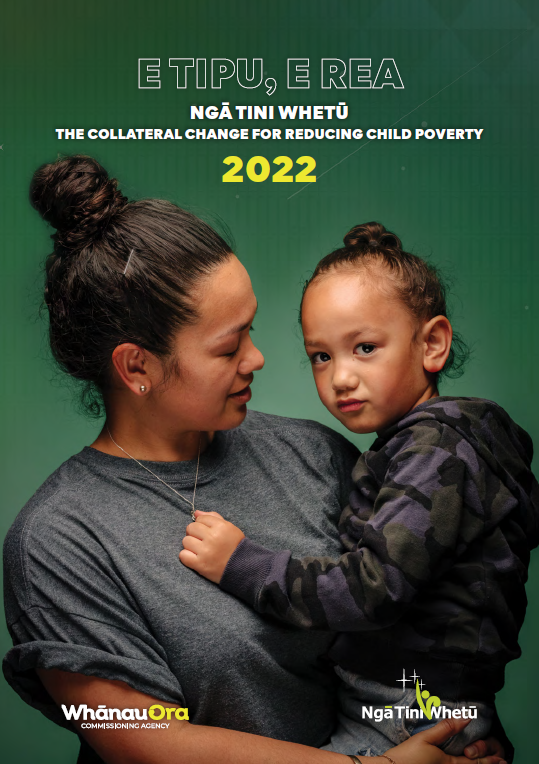E Tipu E Rea, Ngā Tini Whetū –
The Collateral Change for Reducing Child Poverty 2022
E Tipu E Rea highlights the insights of the Ngā Tini Whetū Pilot – the Whānau Ora Commissioning Agency (WOCA) response to the Department of the Prime Minister and Cabinet’s (DPMC) child poverty reduction and child and youth wellbeing strategy programmes. These programmes aim to improve the wellbeing of all New Zealand children and young people, with a particular focus on those from low-income households. The DPMC provides significant financial and policy support to these programmes, including through the Child Wellbeing and Poverty Reduction Group.
This report outlines the need for all of us to come together and collaborate as one entity to effectively lower the disheartening statistics that exist in our communities, focussing on immediate and progressive results. Ngā Tini Whetū exemplifies the ongoing success of Māori-led, kaupapa Māori, whānau-centered and wraparound approaches in supporting whānau Māori into spaces of mana motuhake. Through engaging multiple levers of change, the programme achieved a multitude of diverse and far-reaching outcomes. The cross-sectoral funding that devolved resource from multiple agencies to WOCA allowed the partners to use the pūtea in ways that work best to support whānau to flourish.

